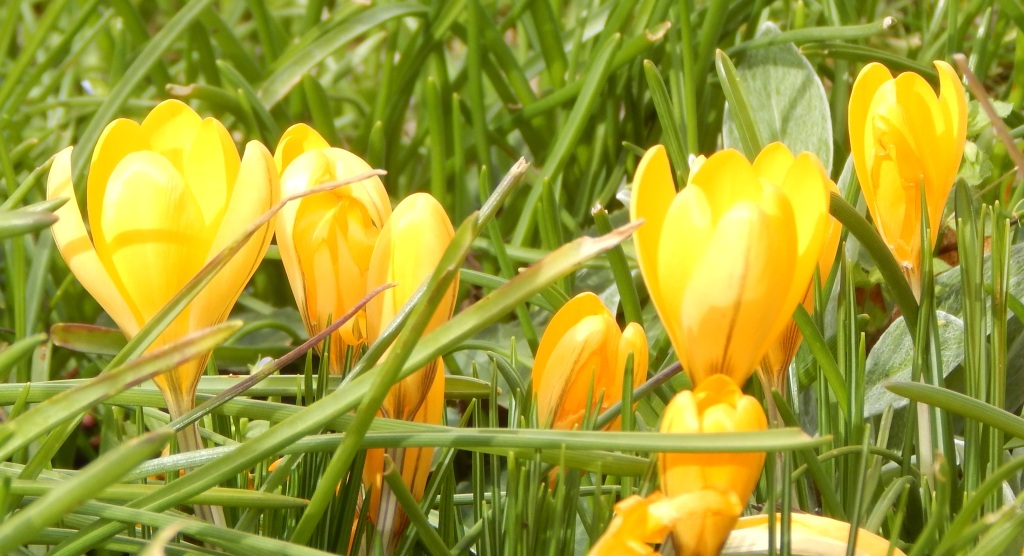
[104] Crocus flavus, Crocus
Introduction
Crocus flavus, the Yellow Crocus; Crocus vernus, the Spring Crocus; and Crocus tommasinianus, the Woodland Crocus, together with other species and cultivars, are widely cultivated and in places may be naturalised as early flowering garden plants.
They should not be confused with Colchicum, often called Autumn Crocus, which is visually very similar but is not in the same family. Some varieties of Crocus species flower in the Autumn.
Crocus flavus is also called the Dutch Crocus or Dutch Yellow Crocus. Crocus vernus may be called the Giant Crocus. Crocus tommasinianus is also called the Early Crocus or Tommasini’s Crocus.
Taxonomy
Kingdom – Plants
Division – Vascular Plants
Class – Angiosperms (Flowering Plants)
Clade – Monocots
Order – Asparagales
Family – Iridaceae
Subfamily – Crocoideae
Tribe – Croceae
Genus – Genus
Scientific Names – Various. See Text
There are about a hundred species and many cultivated varieties.
Name
The Ancient Greek krokos probably comes from Hebrew, Arabic and Sanskrit roots meaning Saffron (Crocus sativus.)
Flavus is Latin for yellow, vernus means Spring. The botanist Muzio G Spirito de Tommasini (1794-1879) was the Mayor of the Austro-Hungarian city of Trieste, now in Italy.
Description
There are about a hundred species of Crocus. All come from corms, which for most people are considered the same as bulbs. (It’s a technical difference. Corms are swollen stems; bulbs are modified layers of leaves.) This acts as a food store and allows them to grow and flower early. They are generally among the earliest to emerge in woodlands and gardens (together with [154] Snowdrop.)
They are typical monocots having a circle of long thin leaves and a large vertical flower at the centre. The leaves grow larger after the flower begins to die. By the end of Spring everything above the surface has gone leaving the corm underground.
The hundreds of cultivated varieties come mainly from these three species but I can’t guarantee my identifications. They are generally sold as named varieties rather than species and some may be hybrids. Most of my pictures come from roadside verges.
Crocus flavus are one of the larger varieties, generally plain bright yellow.
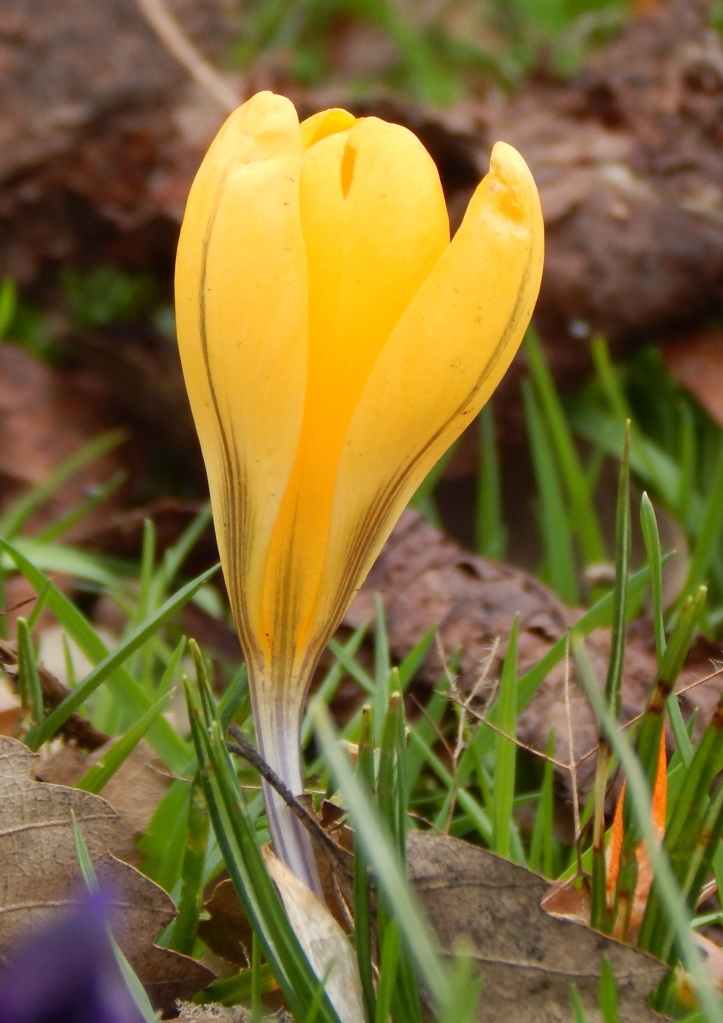

Crocus vernus are similar but with purple or white flowers.

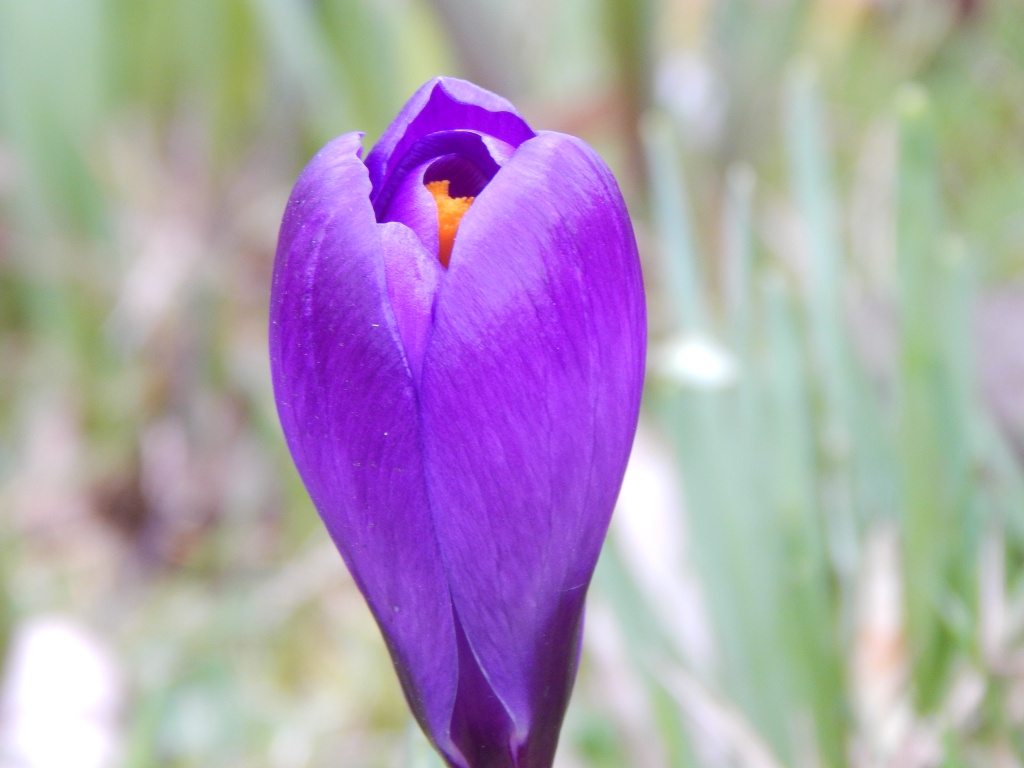
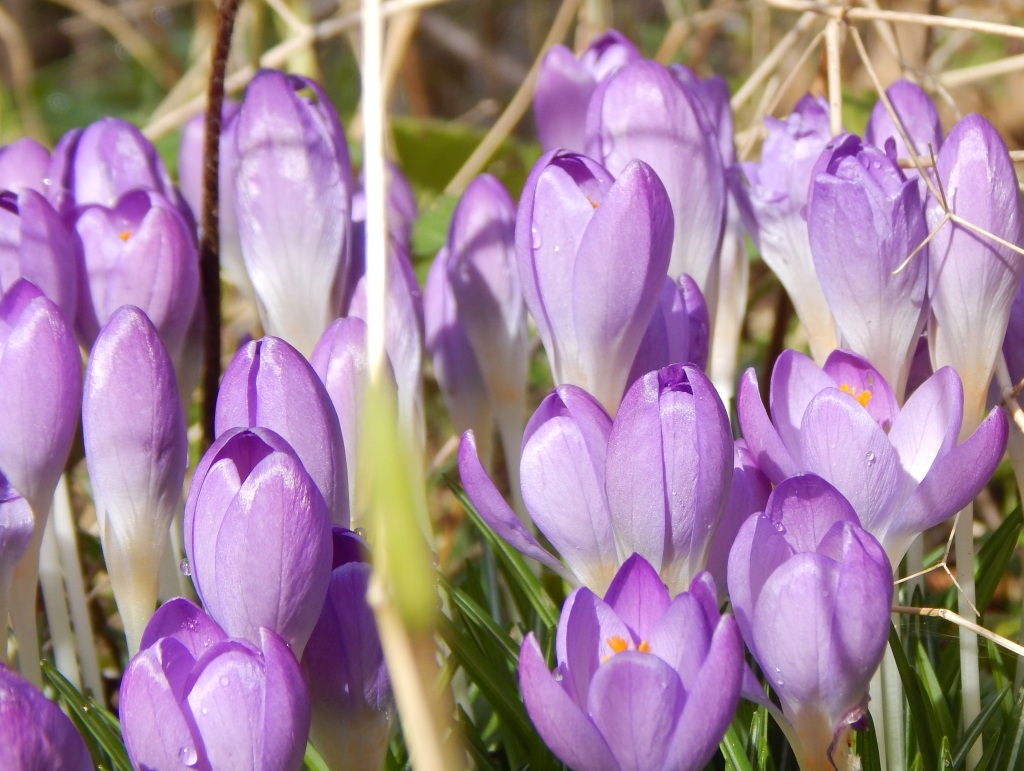
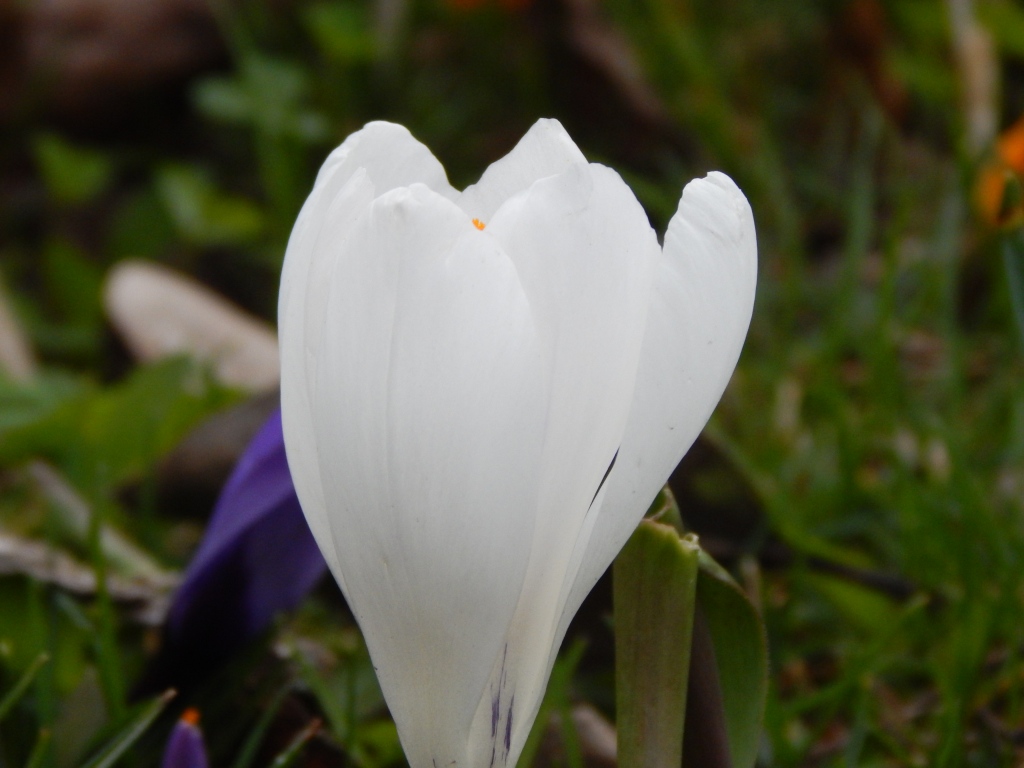
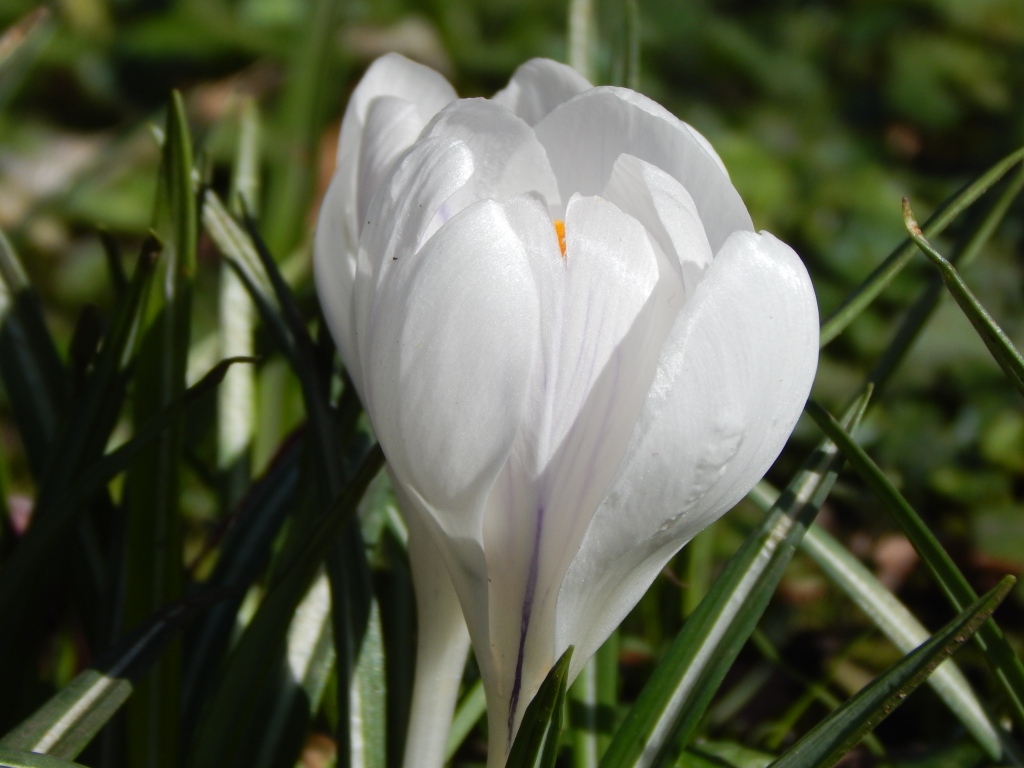
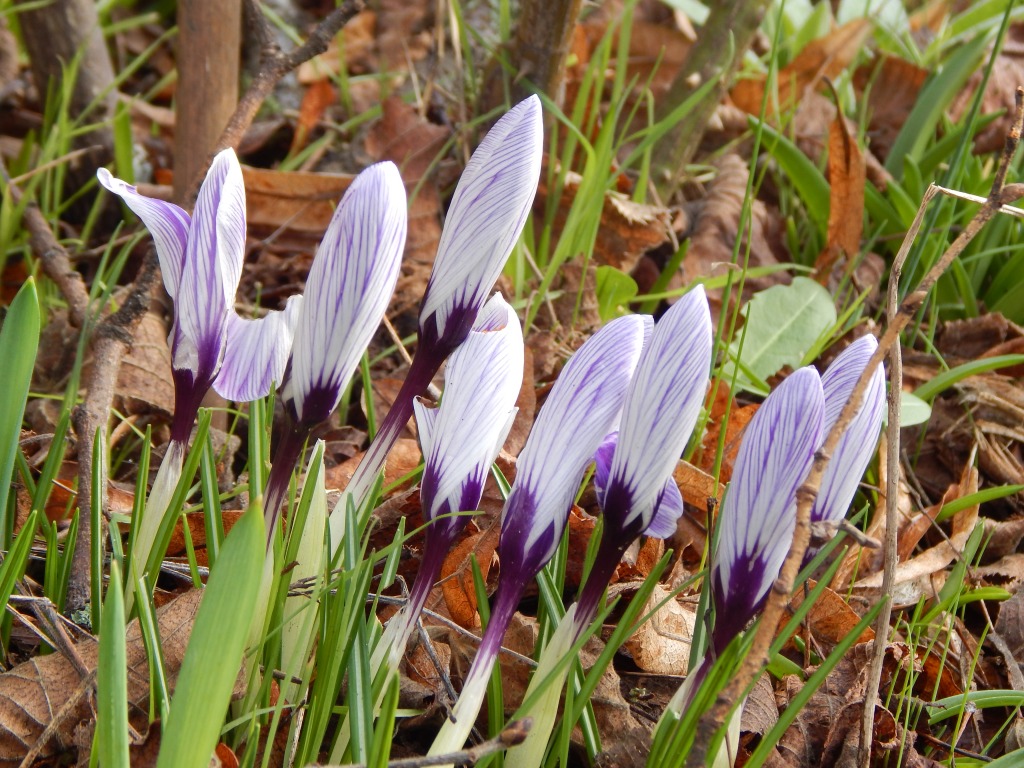
Crocus tommasinianus is a smaller species with open white or lilac coloured flowers.
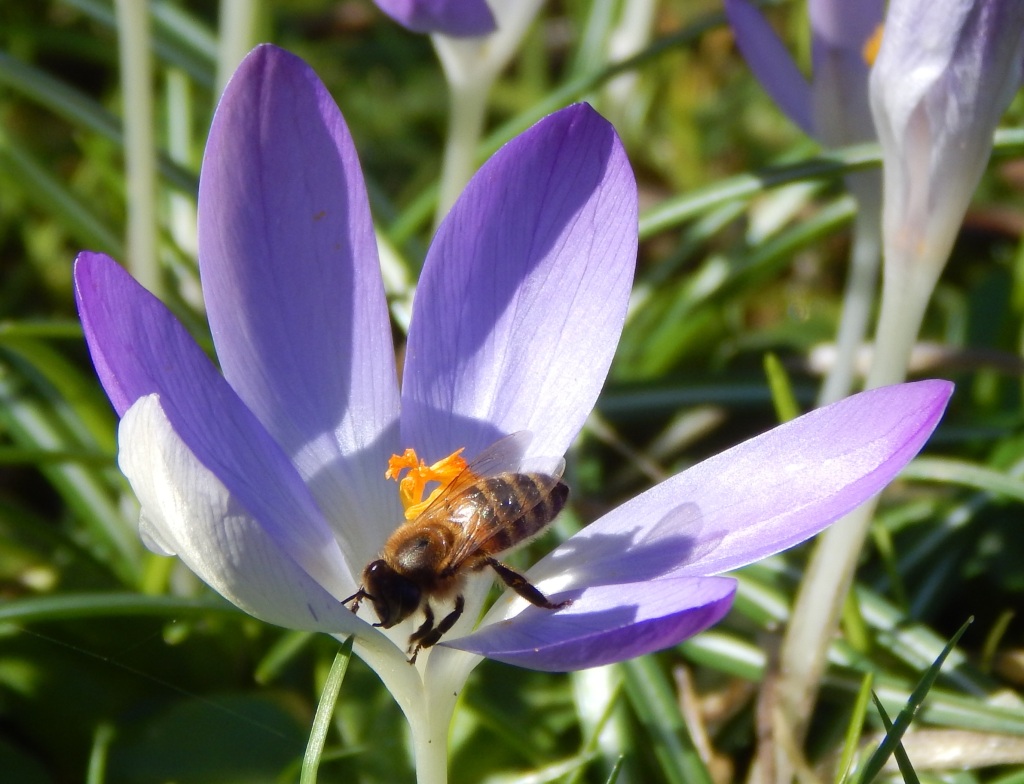

Habitat and use
Each species has a relatively small natural area and about a dozen species cover the area of Southern Europe.
Crocus flavus comes from Greece, Turkey and the Balkans. Crocus vernus comes from the Alps, the Pyrenees and the Balkans. Crocus tommassinianus comes from the Balkans.
They are widely cultivated and naturalised and may be found in woodland and churchyards.
Other Notes
Crocus sativus, the Saffron Crocus is an autumn flowering species, unknown in the wild, with uncertain origins. It is a triploid form of Crocus cartwrightianus, now native to parts of Greece. As a triploid organism it is completely sterile and is propagated by division of its corms. It is believed to have come from Iran several thousand years ago.
It is only the stigma, the receptive female part of the flower that is dried and used as a spice and food colouring. there are three in each flower and 200 000 are needed to make a pound of saffron. Almost all of the modern production comes from Iran.
See also
Look out for [154] Snowdrop.

